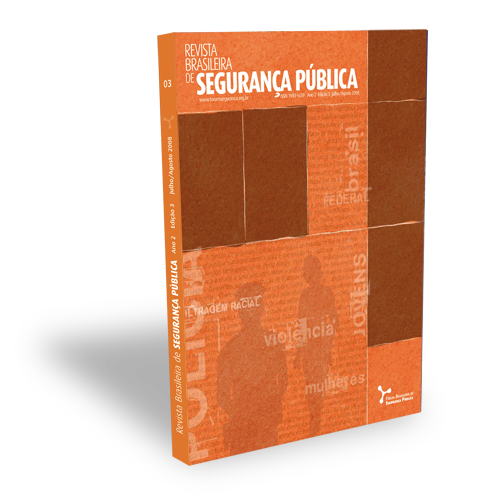Designing public space as a tool for violence prevention
DOI:
https://doi.org/10.31060/rbsp.2008.v2.n1.46Keywords:
Urban Safety, Public spaces, Urban design and planning, Violence preventionAbstract
This paper aims to present and discuss the role of public space for violence and crime prevention interventions. An overview of the importance of public space for interactions and coexistence in urban centers and a presentation of the main theories of violence prevention through urban planning and design are complemented by a discussion of the possibilities and limits of these theories and their impacts. Two initiatives to implement urban projects that consider the relationship between public space and violence prevention illustrate the theories in the Brazilian context. At the same time, the article aims to discuss the intuitive use of spatial theories by criminal groups, exposing some examples of Brazilian reality.
Downloads
References
ATLAS, Randall. The other side of CPTED. Security Management, 1991.
BORJA, Jordi. "Espacio público y espacio político". In: DAMMERT, L. Seguridad ciudadana - experiencias y desafíos. Red 14, Programa URBAL, Viña del Mar, Reimco Ltda., s/d.
BRANTINGHAM, P.J.; BRANTINGHAM, P. L. Environmental criminology. Prospect Heights, Illinois, Waveland
Press, 1991.
BRANTINGHAM, P.; FAUST, F.L. A conceptual model of crime prevention. Crime and Delinquency, vol. 22, n.3, P. 284-
, 1976.
CASTANEDA, Alberto; GARCIA, Jon. Hábitat y espacio público. El caso de los vendedores informales en el espacio público físico de Bogotá. Bogotá, Alcaldía Mayor de Bogotá, Secretaria de Gobierno, Instituto para la Economía Social, PNUD, ONU Hábitat, 2007.
CLARKE, R.V. Situational crime prevention: Theory and practice. British Journal of Criminology, vol. 20, n. 2, p.
-147, 1980.
CLARKE, R.V. Situational crime prevention: successful case studies. 2 ed. Albany, New York, Harrow and Hestion, 1997.
JEFFREY, C.R. Crime Prevention through Environmental Design. 2 ed. Beverly Hills, Sage, 1997.
NEWMAN, Oscar. Defensible space: crime prevention through urban design. New York, Macmillan, 1973.
RAU, Macarena. Prevención situacional en América Latina y el Caribe. In: ALDA, E.; BELIZ, G. ¿Cuál es la salida? La agenda inconclusa de la seguridad ciudadana. Washington, Banco Interamericano de Desenvolvimento, 2007.
SECRETARIA ESPECIAL DE COMUNICAÇÃO SOCIAL. Das remoções à célula urbana - Evolução urbano-social das favelas do Rio de Janeiro. Prefeitura da Cidade do Rio de Janeiro, 2003 (Cadernos da Comunicação).
UNHABITAT (United Nations Human Settlements Programme). Global report on human settlements 2007 Enhancing urban safety and security. London, Earthscan, 2007.
WHO - World Health Organization. World report on violence and health. Geneva, WHO, Capitulo Violência: um problema global de saúde pública, 2002.
Downloads
Published
How to Cite
Issue
Section
License
Copyright (c) 2012 Revista Brasileira de Segurança Pública

This work is licensed under a Creative Commons Attribution 4.0 International License.
Licensing
The Brazilian Journal of Public Security uses the Creative Commons License as a form of licensing for its published works. The license used follows the CC BY 4.0 - Attribution 4.0 International model.
To see the permitted rights please go to the full licence or to our Copyright and Licensing page.



